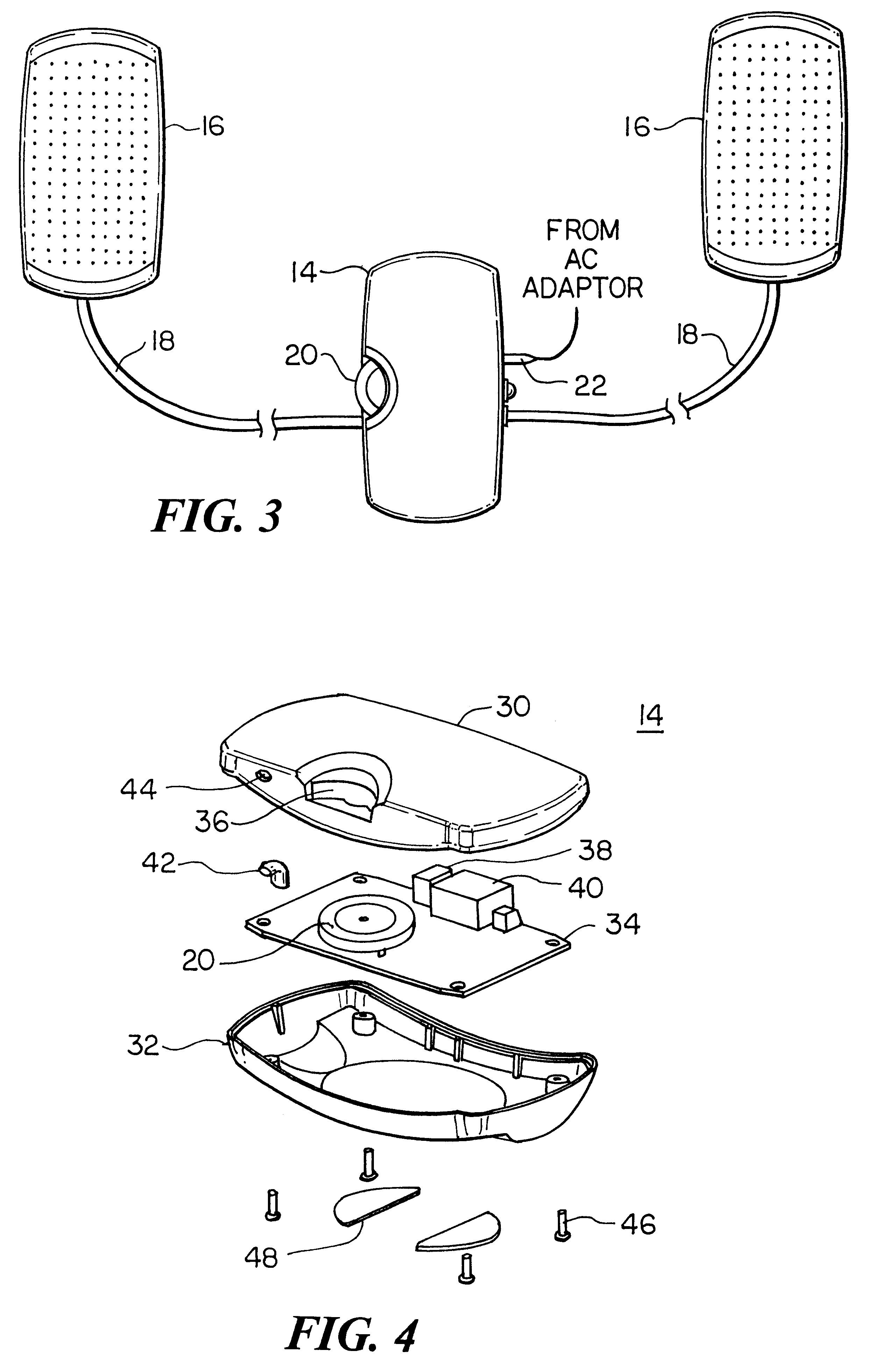Personal sound masking system
a sound masking and personal technology, applied in the field of personal sound masking systems, can solve the problems of limited acoustic measures that can be employed to reduce the level of the resulting speech that is transmitted, prohibitive costs, and few smaller offices that use such systems, and achieve the effect of simple installation and easy modification
- Summary
- Abstract
- Description
- Claims
- Application Information
AI Technical Summary
Benefits of technology
Problems solved by technology
Method used
Image
Examples
Embodiment Construction
[0027]FIGS. 1 and 2 show a typical open-plan office, often referred to as a “cubicle.” The offices are separated by partitions 10 whose height is typically in the range of 4.5 to 7 feet, but may be so low or so acoustically transparent that no acoustical blocking is achieved. The office occupant may sit at a desk 12 or other station. A sound masking system includes a control module 14 mounted on an inside inner panel of the desk 12, using for example mating hook-and-pile tabs secured to the desk 12 and control module 14 respectively. The control module 14 is connected to A and B channel loudspeakers 16 via telephone-type multi-conductor cables 18. The loudspeakers 16 are secured to a partition 10 using suitable means, examples of which are described below.
[0028]FIG. 3 shows the elements of the personal sound masking system. The control module 14 has a user-accessible volume control 20. The loudspeaker cables 18 connect to the control module 14 using telephone-type modular plugs and ...
PUM
 Login to View More
Login to View More Abstract
Description
Claims
Application Information
 Login to View More
Login to View More - R&D
- Intellectual Property
- Life Sciences
- Materials
- Tech Scout
- Unparalleled Data Quality
- Higher Quality Content
- 60% Fewer Hallucinations
Browse by: Latest US Patents, China's latest patents, Technical Efficacy Thesaurus, Application Domain, Technology Topic, Popular Technical Reports.
© 2025 PatSnap. All rights reserved.Legal|Privacy policy|Modern Slavery Act Transparency Statement|Sitemap|About US| Contact US: help@patsnap.com



